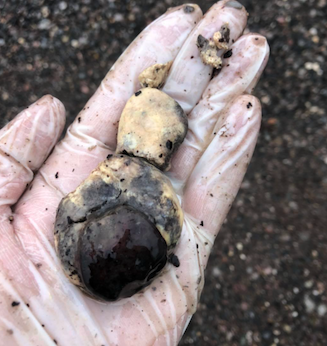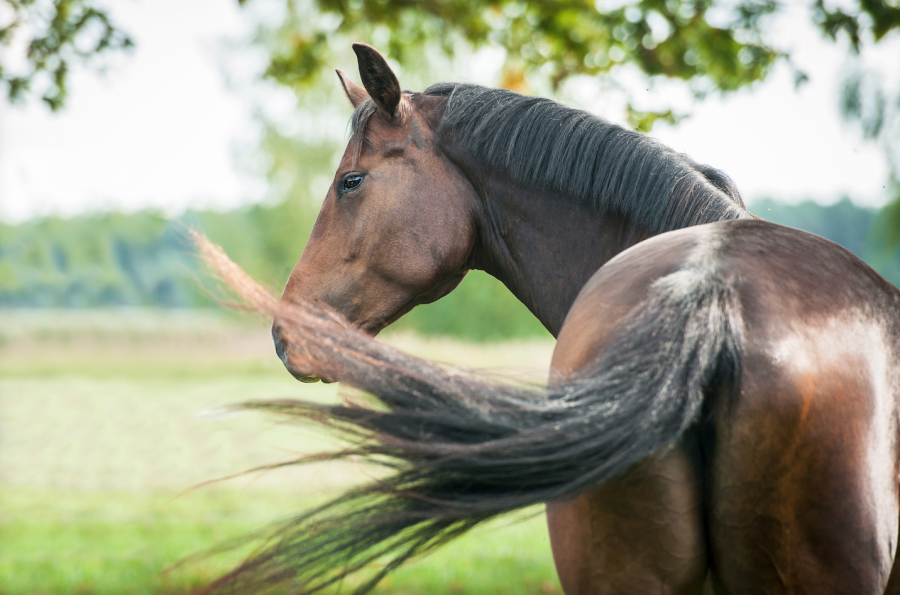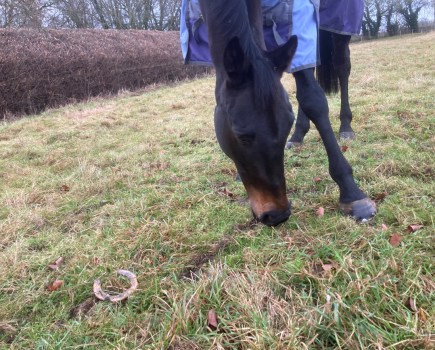Every male horse benefit from sheath cleaning, because they get ‘beans’ and a build-up of smegma due to the inevitable build-up of grime in that area of their anatomy. Having beans will cause your horse discomfort — a bit like walking with a stone constantly in your shoe.
Mares can also be affected by beans. Many people don’t realise this, they think it’s a problem only for the boys, but mares can get beans in their vulva. So sheath cleaning is an important part of taking care of any horse. However, it needs to be done correctly and at the right intervals.
What is a bean?
A bean is a hard mass of skin cells, fat cells, dust and urine that collects at the tip of the horse’s penis, in a small pocket just above the urethra. This is the tube that urine passes through.
Just above the urethra is a pocket of space called the urethral fossa, and this is where a build-up of dirt and grime can happen, which results in hardened ‘beans’. When the beans get so big that they interfere with the horse’s ability to pass urine properly, it can lead to all sorts of infections and kidney problems. Generally, when a stallion or gelding has severe beans, they will be in obvious discomfort.

A bean I removed while sheath cleaning
Signs that a horse needs sheath cleaning
If you suspect your horse has a bean, look out for symptoms including, but not limited to:
- A swollen sheath
- Tail rubbing
- Kicking up at the sheath
- Bucking when ridden
- Feeling “stuffy” from behind
- Behavioural changes
Why is sheath cleaning necessary?
The pros of sheath cleaning for horses are:
- To allow for the removal of hard and sharp smegma that can be uncomfortable for some horses.
- To check for any ‘beans’ and the safe extraction of those.
- It is an opportunity to do a health check of the sheath and penis, making sure there are no abnormalities such as penile cancers. This is particularly important to do in the summer, as horses are then at higher risk of getting fly strike (maggots).
Your horse’s sheath has a population of “friendly” microorganisms that help maintain a healthy balance within. If you clean it too frequently, you’ll kill these microorganisms, disrupting this balance — and your horse’s sheath is likely to get even dirtier. That’s why it’s best to clean a sheath once or twice a year (ie every six to 12 months) and not more often than this.
Are there any downsides to sheath cleaning?
The only negative effects that can result from sheath cleaning are if it is done too frequently, which can affect good bacteria levels and cause soreness. I have known people to clean weekly; I’d never recommend this, unless it’s under veterinary guidance for a particular reason. It is generally safe for owners to try and clean their own horse’s sheath, as long as you feel safe to do so — especially if you have a tricky horse or one who is unfamiliar with the process — and you know how to do it correctly.
Some horses can go through life without a sheath clean and not show any signs of discomfort. What they do is compensate for the discomfort, because horses still have that survival instinct, even though ours are domesticated. In the wild, the weakest would be eaten, so they have to show they are strong.
What is the cleaning process?
I use a mild soap or a water-based lubricant to soften, loosen and start to gently remove the chunks of smegma and dried skin on the penis. At this point, we would have detected a bean and removed it, if the horse had one. We then wash through the sheath with clean warm water to clean it out. Finally, we flush the sheath through to remove the final bits and any residue.
My advice for those with horses that are unsettled with being touched is to start by using grooming sessions to help desensitise them. Groom the horse as usual and, as you brush under the belly, gently brush across his sheath and between his hind legs. Don’t make this a big issue and don’t just make a beeline for the sheath — build up to it.
Gradually you can spend more time here, so your horse is used to someone being in that space and becomes more tolerant of it.
Can mares be affected by beans?
Yes, mares can get beans too. These are located at the bottom of her vulva, in between the creases. It’s good practice to routinely clean in between and around their teats as well, removing any hard, waxy build-up. This also gives you an opportunity to check for any abnormalities. As humans, we check ourselves regularly for any lumps and bumps, so it’s worth familiarising yourself with your female horse and what’s normal for her.
Ultimately, sheath cleaning and checking a mare for beans isn’t the most glamorous job and many owners prefer not to have to do it themselves. So rather than leave your horse unchecked and potentially feeling uncomfortable, you can ask someone experienced like myself to do it for you. That’s why I set up my affordable sheath cleaning service.








